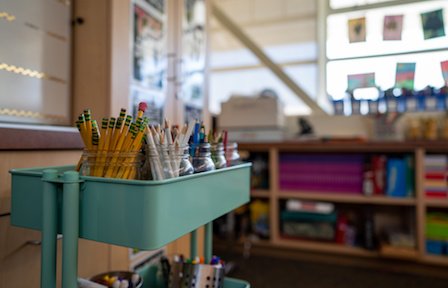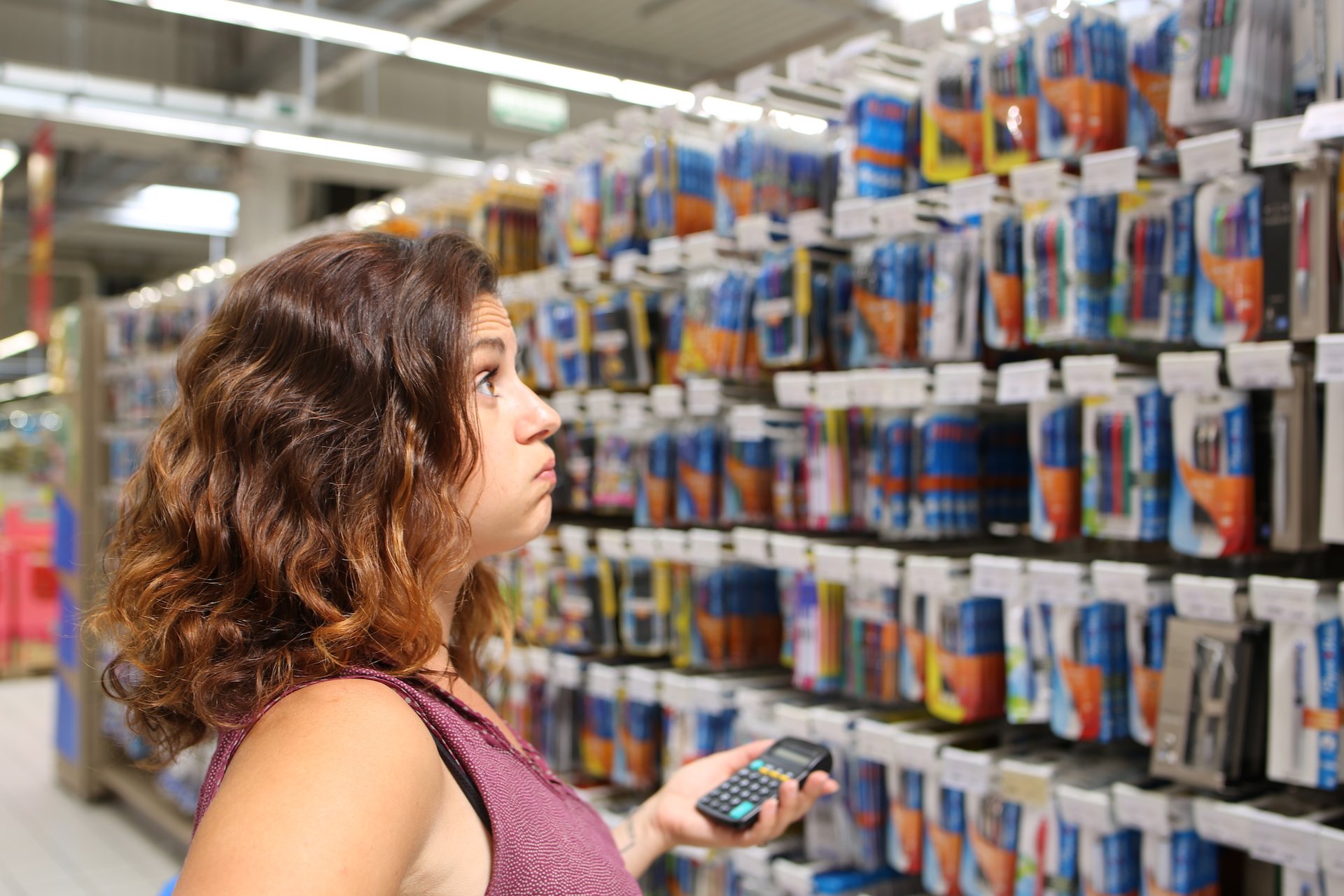Key Takeaways
- On average, educators spend somewhere between $500 and $750 of their own money every year on supplies their students need.
- Within the past two years, inflation has spiked to its highest level in four decades, and prices for school supplies increased almost 24 percent.
- Despite lagging pay, educators continue to subsidize classrooms to help students feel prepared and engaged at school.
When it was time to do her back-to-school shopping this summer, Angel Garcia spent about $275 dollars on school supplies and backpacks for her two high-school age kids. Then she spent another $300 on her other kids—the ones in her third-grade classroom at George Washington Elementary School in Los Angeles.
“And that’s after having my Amazon Wish List cleared through contests,” says Garcia, who entered several contests run by various businesses looking to help out a few lucky teachers.
Garcia teaches at a Title I elementary school in Compton. Like most teachers and support staff across the United States, she routinely buys supplies her students need for a successful year.
Many educators say their districts simply aren’t supplying everything their students need to be engaged, comfortable, and ready to learn. Multiple surveys, including one by the U.S. Department of Education, show that 94 percent of teachers reach into their own pockets to purchase classroom necessities. Support professionals--including bus drivers, front office staff, classroom aides, and custodians--also spend their own wages to buy supplies.
On average, educators spend somewhere between $500 and $750 of their own money every year on things students need.
That runs the gamut from paper, pencils, markers, and glue to class subscriptions for online learning programs, lab equipment, snacks for hungry kids, tissues and cleaning supplies, and even hand soap for the bathrooms.
Educators can take an above-the-line tax deduction of up to $300 for qualifying classroom expenses, which reduces their taxable income.
But studies show that on average, educators spend somewhere between $500 and $750 of their own money every year on things students need. And many educators spend a great deal more.
Where does the money go?
Dammian Tucker, an elementary special education teacher in Tacoma, Wash., spends between $1,500 and $2,000 on his students every year. “School supplies, snacks, and paper products for my class—it adds up real fast,” he says.
Christopher Renner, an ESL teacher from Kansas, documented $2,400 in spending on school supplies last year.
Like millions of other educators, Renner simply fills the gap between what his students need to learn and what his district makes available. That includes curricular materials, classroom manipulatives, and incentive items to reward students for goals met.

As a third-grade teacher, Garcia routinely needs paper, pencils, crayons, erasers, tissues, and craft supplies. This year she also needed new library book bins, which she’s hoping will last a good five years.
Out-of-pocket classroom expenses are greatest during the back-to-school period but continue to add up throughout the year. Educators report buying clothing, winter gear, eyeglasses, food, and toiletries for students on top of classroom supplies and teaching materials.
Some educators have stopped tallying how much they’re spending on their classrooms.
When asked about her classroom spending, Minnesota teacher Kimberly Bjelde-Antonsen said, “I don’t even want to think about it. I know it’s too much, but I also know everything I buy is important and makes my school year easier and my students’ school year better!”
A tough time for out-of-pocket spending
While all educators wish they could provide everything their students need, the economic reality of being an educator is harsh.
Within the past two years, the annual inflation rate has spiked to its highest level in 40 years, and prices for school supplies increased almost 24 percent, according to the Bureau of Labor Statistics.
That’s made back to school shopping hard on many families, and difficult for the educators who are expected to subsidize their classrooms to help their students reach learning benchmarks throughout the year.
In a white paper released last year, the National Education Association stated that under-resourced schools and the unstated expectation that educators will spend their own money on supplies and equipment are factors that drive educators away from the profession.
It is also well-known that educators make lower salaries than other similarly educated professionals. Despite some progress on educator compensation in individual states and districts, when adjusted for inflation educator pay has declined by an estimated 6.4 percent, or $3,644 over the past decade, according to NEA’s 2023 Rankings and Estimates report.
These conditions have led some educators to draw the line.
“After spending copious amounts of money on my classroom in the first 20 years, since the pandemic I’ve spent very little of my own money,” says Crystal Klein, a high school teacher from Nebraska. “There’s no prize for spending your own money.”
Jamillah Bomani, an elementary teacher from Seattle, says she’s “going for $0” in classroom spending this year. “If I can’t get it through DonorsChoose, an Amazon Wish List, or my PTA budget, then I just won’t have it.”
Sources of support
Some NEA locals have taken on the issue of educator out-of-pocket classroom spending during bargaining. When they are successful, it brings immediate and substantial relief to educators.
Vicki Harrod, a second-grade teacher at Peshastin-Dryden Elementary School in Peshastin, Wash., says she doesn’t spend much at all on classroom supplies anymore, “thanks to our union.” Her local, the Cascade Education Association, bargained successfully for annual funding for classroom spending.
“Our district gives us $350 to spend on whatever we want, and another $150 for essentials like construction paper and so on,” Harrod says.
Many educators have turned to online resources such as DonorsChoose, Amazon Wish Lists, and Adopt a Classroom to ask for donations. While this may save educators some of their own money, it does require an investment of time to set up and repeatedly promote their online campaigns.
Still, educators are grateful for the support.
Memphis teacher Rita Elle procured about $600 worth of supplies through her Amazon Wish List this year, noting that nearly all of the items “were purchased by friends and family.”





